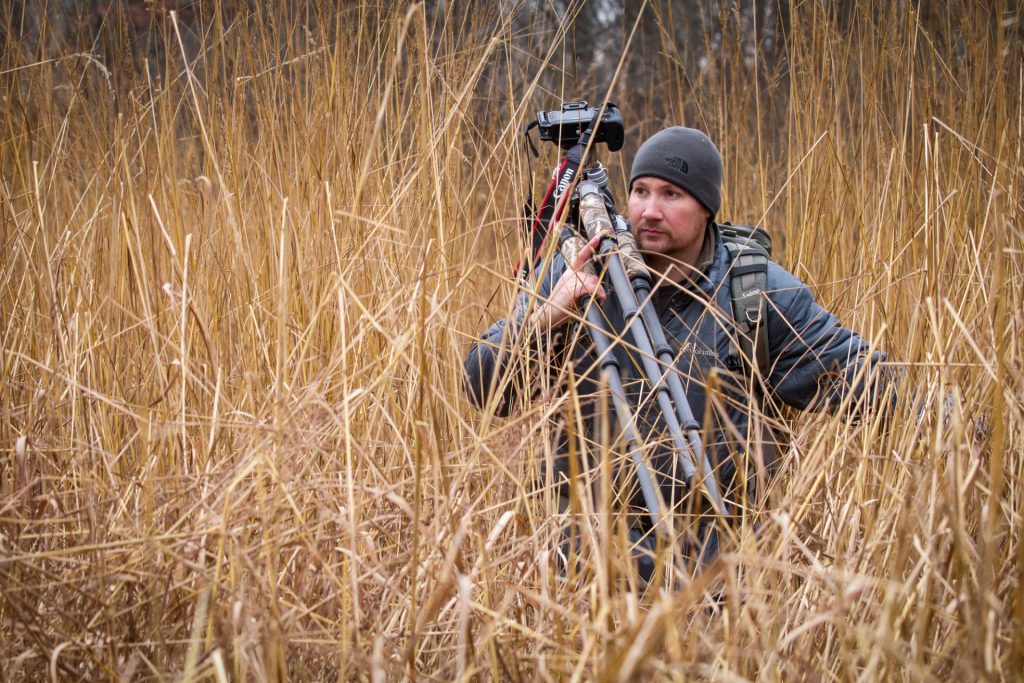
It's something that every photographer who makes the great outdoors their studio can relate to - when the weather doesn't play along with your best laid plans for a shoot. Do you pack up and head for home, putting it on the list for next time, or try and make the best of it?
This was the situation f-stop user, Derek Jereell, found himself in when on a recent trip to Montana and Wyoming with his trusty Satori EXP. Based just outside of St. Louis, Missouri; Derek is a self-taught photographer with a deep passion for the great outdoors. This passion to explore and show the beauty of the natural environment has produced some stunning shots, but nature doesn't give up the good so easily every time, and sometimes you have to accept defeat. The following two images that Derek sent through to us show that everyday reality, capturing the feeling of 'the awesome shot that got away':
"I spent about a week shooting wildlife in and around the Grand Tetons, dog sledding in the Absaroka-Beartooth Wilderness and shooting landscapes along the way. I spotted this location on a hike earlier in the week and made my way back to catch the sunset. The sunset was a bust and the clouds were socked in on the mountains and moving in fast, so I had to scramble to try and salvage something and get a few shots off."


The wilderness weather hadn't co-operated with Derek's vision for the shot this time. We wanted to see the fruits of Derek's hard work when everything did go to plan, so here are some of Derek's shots from the field in Maine, Utah, Colorado, and beyond when all the elements came together. How many of these locations do you recognize?






About Derek Jerrell:
Derek Jerrell is an award-winning freelance photographer specializing in landscape, wildlife and outdoor adventure photography. His images have been featured in popular outdoor publications such as Outdoor Life and Field and Stream and used by popular outdoor brands including Winchester, Browning, Bass Pro and Cabela’s.
You can follow more of his adventures on Derek's Instagram here.
Give him a follow @derekjerrell for more inspiring shots from America's great outdoors when the weather is good... and when it's not!
"We Are f-stop" is for all f-stop users to share their stories from the field, from small daily adventures to epic travels. Contact us with your story on Facebook or drop us an email to [email protected] and let us know where your photography takes you and your f-stop pack!
SHOP ALL GEAR MORE WE ARE f-stop


©2022 F-stop
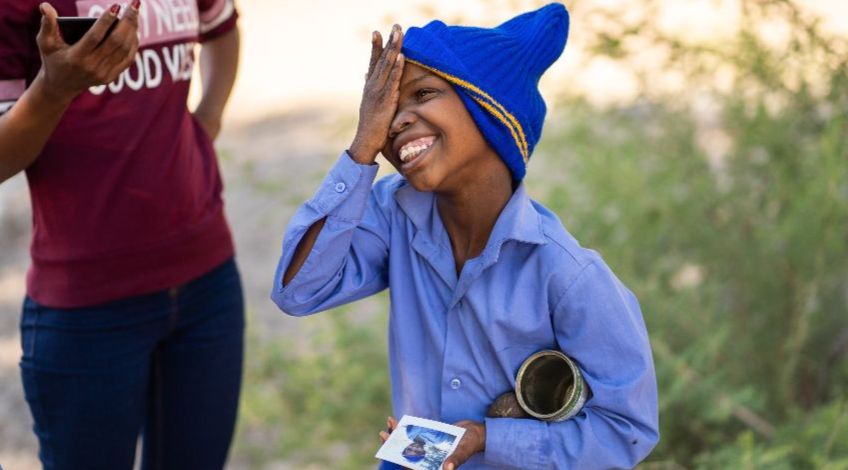
Working in the industry for over 10 years, Emily switched gears and entered the academic world as an assistant professor of Digital Media at Utah Valley University. She’s hoping to inspire the next generation of Digital Media students with her escapades. When she’s not in the classroom, she’s plotting and planning new projects and expeditions that continue to take her around the world. Emily has been able to combine her love of video and photography with travel and in 2018 she finished her personal goal of visiting all seven continents. You can follow her on Instagram @highlandhedrick or the Instant Portrait Project @instantportraitproject
Words and images by Emily Hedrick

Cameras and lenses. Check. Extra batteries. Check, check. Instant film camera. Check?
I had no idea that a last minute addition to our gear list would launch in to a new and exciting side project. I’m a professor at Utah Valley University in the Digital Media Department. I had just finished my first year of teaching full time at my alma mater when I was preparing to take a small group of students to Namibia, Africa to work on The Untold: Namibian Women’s Stories Project.
The Untold Project is a three-year endeavor to capture women’s stories from all twelve ethnic groups in Namibia. There has never been a comprehensive research project about Namibian women by women. My mentor professor Mike Harper began the collaboration project in 2017 with journalism professor Emily Brown from the Namibia University of Science and Technology (NUST). I took over the Utah Valley University (UVU) side from Mike for the last two years of the project. The NUST team will be conducting the interviews, while UVU is capturing the stories.
As our UVU team began organizing our gear for the interviews, our f-stop Loka UL and Ajna packs had to contain our individual mobile studios. We had to pack lightly but efficiently to make sure we capture the quality we needed. We brought Sony A7III’s and an A6400 with all the accompanying lenses, batteries, filters, and accessories. A last minute addition was the FujiFilm SQ6 Instax camera, which was definitely the oddball of the group!

Lotus carrying all the essentials in the ghost town of Kolmanskop
Located on the Atlantic coast and was once a part of South Africa, Namibia is a desert country that houses both the Namib with its giant sand dunes and the dry Kalahari. The landscapes are surreal and sparse with an occasional oryx or giraffe roaming the bush.
Interviews with the women didn’t begin for another week which afforded us an opportunity to travel to various sites around the country. As a group of budding photographers we decided to go to the ghost town of Kolmanskop near Luderitz. We were also in some of the best dark sky country in the world and we couldn’t pass up an opportunity to drive out to the Quiver Tree Forest and photograph the Milky Way.

Night sky at the Quiver Tree Forest with light pollution from nearby Keetmanshoop.
The following week the team traveled west to the coastal town of Swakopmund, we had planned to do interviews in an informal settlement on the outskirts of town. An informal settlement is essentially a squatter’s camp. The houses were all part of a network of corrugated metal huts with outhouses and water spigots on each block. It’s an alarmingly high concentration of people in impoverished conditions.
When the NUST van pulled in and the team piled out, our presence generated a lot of interest by the community. As an icebreaker, Emily Brown suggested that I take a picture of one of the mothers. When I handed her the photo, she gave me an expression that seemed to say, “Okay why did you give me a blank white piece of plastic paper?” I didn’t speak Afrikaans and trying to explain with hand gestures that an image will appear didn’t translate, but it did buy me time as her image magically appeared. And that’s what it was: magic.
Soon other mothers wanted photos of their babies and children. Snap, snap. More kids came from out of nowhere to get their photos taken too. Picture snap after picture snap. I had only brought 10 packs of film (or 100 instant film exposures) to last the entire trip. I thought 100 exposures would be plenty of film for the three-week trip. Oh, how wrong I was!

Swakopmund children and their photos. (Photo: Brandon Leavitt)
Everyone held their photos gently; they treasured the image and protected it from the dust. When I spoke to Emily Brown about it later, she said that many of these kids will never have a physical photo of themselves in their childhood. For them, a photo is a luxury item. In an age of digital abundance and selfie-taking in America, for these children and youth, an instant photo isn’t a novelty, it’s a precious keepsake.
Our next set of interviews took us to the eastern border near Botswana to meet with the San people: a kind, beautiful ethnic group that has unfortunately been marginalized in Namibia. We had traveled to another settlement near the town of Tsumkwe. Breaking the ice once more, I pulled out the Instax camera. Again, confusion and disappointment when I took the first (seemingly blank) image! That is until…

A portrait being revealed. (Photo by: Brandon Leavitt)
Soon the colors began to appear, and the image of the San mother developed before their eyes. Smiles erupted as the instant film worked its magic and created a small portrait. Soon there was a line of mothers and children all wanting their photos to be taken too. Cartridge after cartridge I snapped away at the growing congregation of adults and children.
Me (Emily Hedrick) handing out photos. (Photo by: Kellie Leavitt)
The most heartwarming moment was when the matriarch of the settlement was being interviewed and she asked if she could get her photo taken. I wanted to take her photo before because of the beautiful vibrant colors that she was wearing, but I couldn’t understand her native click language. When she asked for a photo I was able to take the last cartridge of film out and take her photo. But not before I accidentally bumped the button and took a picture of my shoes. Ugh, 8 photos left!

Matriarch and her portrait.
The matriarch had poor eyesight, but as the photo developed, her portrait ended up being the most vibrant one. The film clearly showed off the colors of her headwear and clothing. Hidden beneath her sash was a little satchel where she carried her most important valuables. Everything was inside her satchel was in pristine condition: ID card, wallet, and other mementos neatly stored inside and never brandished in the dusty settlement. After showing off her own photo, she tucked it carefully away into her satchel and gently hid it back away in her sash.
Emily Brown leaned over to me as the matriarch was putting away her photo, “This is something she will hold on to for the rest of her life.” A photo. A simple instant photo was the best tangible gift we could give. It was in that moment that I knew I had to do something much, much more.

Little boy and his portrait. (Photo by: Brandon Leavitt)
After we wrapped up our interviews and made our way back home to Utah, there was still so much work on the Women’s Project we had to do, but I couldn’t shake this idea about doing more instant film portraits for people. There is no shortage of international projects our university is doing and this idea could expand it to many more areas around the world. I had to do something.
I began working with UVU on extending the project to the community. UVU was 100% supportive on setting up a crowdsourced webpage letting anyone donate to the newly created Instant Portrait Project through UVU’s website. The project launched on September 6th and all proceeds will go towards buying a second camera and as much instant film we can carry with us. I think I’ll be upgrading to the Ajna backpack to get 8 more liters of space for instant film!

Photo by: Kellie Leavitt
The Instant Portrait Project is there to give a record of a moment in time in a person’s life. It is a keepsake that can be held on for many years to come.
We aim to raise $500 to get us started and plan to do subsequent fundraising as the project expands to other areas around the world.
"We Are f-stop" is for all f-stop users to share their stories from the field, from small daily adventures to epic travels. Contact us with your story on Facebook or drop us an email to [email protected] and let us know where your photography takes you and your f-stop pack!
SHOP ALL GEAR MORE WE ARE f-stop


©2022 F-stop
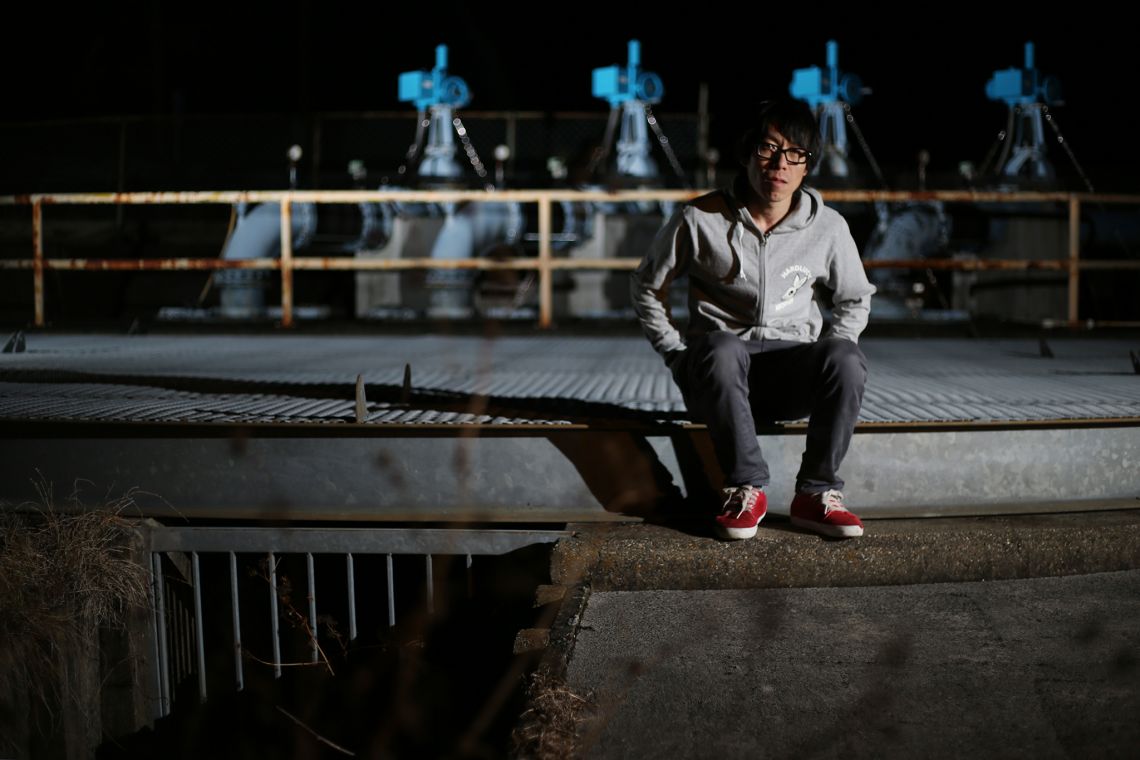
In this "We Are f-stop" story, we are travelling over to Japan with the images of Naoki Odagaki. A man of many talents, he is a skateboarder, sponsored snowboarder, photographer, and father. Somehow he manages to fit shooting photographs around running a respected shop, and f-stop dealer, 'FOCUS', in Gifu, Japan. Now in it's thirteenth year, it was founded with the same DIY spirit as these images, working hard after hours to make a vision into reality. A love of both riding and shooting, and limited time lead him to creating these self-portraits of skateboarding and snowboarding after work and at the weekend. Seeing these shots, we had to find out more:


Hi, Naoki. Can you tell us a little about yourself?
I’m Naoki Odagaki. As a snowboarder, I ride for UG., 66 Denim, Details Outerwear, and Death Label Snowboards. I also run a shop “FOCUS” in Gifu, Japan. We deal mainly in snowboards, skateboards, clothes and f-stop packs. I began snowboarding and skateboarding when I was 22 years old, and started taking photos around when I turned 30, so my "camera life" has been for the last sixteen years.
What made you start taking self-portraits?
I think it’s the same reason as everyone who shoots. When started to shoot snowboarding, I was stoked when I saw the images. I love both riding (snowboarding and snowboarding) andshooting pictures, and there was often no cameraman around, so I bought a camera and started shooting self-portraits.
Are you always riding alone, when taking the self-portraits?
I’m usually riding with my good friend Ryuichi Kawashima, who is also team rider on U.G. outerwear and 66 Denim. In that case, I set up the camera and speedlights myself, get the settings dialed in and then he triggers the shutter at the best moment when I’m riding. It’s team work! Other times I set up LED lights and trigger the shutter with the remote, as you can see in my hand in the shots below:


Most of the skateboard shots are at night. Why is that?
A lot of the shots are at night because I work a full-time job and run the Shop FOCUS, and then with two children on top of that, we often go out and shoot in the middle of the night after they have gone to bed!
What is the skate and snow scene like, around the shop Focus in Gifu?
Gifu prefecture is located right in the middle of Japan, about halfway between Tokyo and Kyoto. It is an area rich in nature, surrounded by forests and clear streams. There are as many as twenty small ski resorts within an hour’s drive so snowboarding is pretty popular here. The skate scene in Gifu is mostly still pretty underground, but that may change as Japan is getting excited about the inclusion of skateboarding in the 2020 Tokyo Olympics.
Is the full pipe skateboard shot a secret spot in Gifu?
Yes that’s Gifu. When I’m driving, I’m always in ‘seek, search and hunt’ mode. I hardly ever go to a skatepark to skate. Instead, I’m always on the lookout for secret virgin spots that haven’t been ridden before to session.
Your work is all very DIY. Are there any photographer's work that make you want to go out and create photos?
For me it is about expression. Those who have affected me are... Ryuichi Kawashima, Masaaki Irie, Kei Sato, Patrick Wallner and Akiyoshi Takada.
Do you have a next goal for self-portrait shooting?
Sometimes I want to ride without a camera! Ha ha!
Thank you for the insight into these images. We hope you get some time to ride without the camera - but not too much, as we love seeing these shots, which remind us that time and other commitments can be overcome to get out there and create.


Naoki's tools for creation (below) in his words:
My Packs: The Tilopa is the world's best camera pack ever!
My Boards: (Left to right) “OUT OF FOCUS” Skateboards for my shop FOCUS (designed); Death Label Snowboards “WEEKEND RIPPERS” (designed); Death Label Snowboards “Bullet” (shaped); Death Label Snowboards “Dr. RAW” (shaped); Make Yukiita Snowtoys (handshaped)


(below) "Uyoku: An ordinary location, but not ordinary situation. A Japanese “Uyoku” far right-wing group's black propaganda van, and me."


"We Are f-stop" is for all f-stop users to share their stories from the field, from small daily adventures to epic travels. Contact us with your story on Facebook or drop us an email to [email protected] and let us know where your photography takes you and your f-stop pack!
SHOP ALL GEAR MORE WE ARE f-stop


©2022 F-stop
Paolo Avila is a Chilean-born, high-performance athlete. Hyperactive by nature, he has never felt comfortable in the rhythm of normal life. When he was 25 years old, he decided to change course and take a camera to explore his limits in the most extreme environments on the planet. He has crossed glaciers, jungles, and deserts in South America, as well as other parts of the world, making reports and photographs for outdoor magazines.
Through his passion for his dreams, he has twice to be invited to be a photographer in world events, such as the Dakar Rally. He is currently supported by Lippi and Nikon, which have helped him to a high point in his work and personal life. They help him in each adventure, delivering technology, equipment, and support.
Words and images by Paolo Avila

Paolo is currently preparing for one of his toughest endeavors: to cross Campos de Hielo Sur (Southern Patagonian Ice Field) in Chilean Patagonia while shooting photos and making a documentary video for the Lippi brand. In this challenge he will make the most of his photographic and physical abilities to achieve excellence.
I prepared for the adventure and on July 26, 2019 I made my way to the Llaima Volcano located in the Conguillio National Park in the Araucanía region of Chile. My goal was to take pictures of survival courses in the high mountains. This trip also served to update my knowledge in survival, which is fundamental for my work, since I frequently live in borderline situations on glaciers and on volcanoes. The course teaches how to survive with almost nothing in the middle of snowy mountains. Part of the course is about making shelters in the middle of the snow to withstand storms and all that the mountain produces. Avalanche and mountain rescue techniques are also taught.

I usually travel only in South America, since that is where I live. There are few other photographers going where I like to go, therefore I undertake adventures mostly alone. In every adventure there are always challenges, which leads you to develop skills that you never believed that you could develop. These challenges test you and define you as a person and as a professional. On this particular trip, after several days living in snow caves, doing daily walks on ice, working and learning about rescue with ropes, we were attacked by a storm during the last night. The storm grew more violent and aggressive. We had whiteout conditions, temperatures around -20º C, and winds over 100 km/ h during the night.

The next day the storm continued as we began the walk out with almost no visibility. We began to descend from the mountain as a row of 14 people. I was located in the last position, to close the group, and see that no one was left behind. In a moment a gust of wind took me, and I tripped. I fell to the side, but nobody noticed. I remained there for a few seconds, covered in snow and without sight of anyone. I realized that I was lost and with every second I stayed there my chance of survival slipped away. I got up and tried to locate something that would give me direction, but it only looked white. I took off my glasses thinking it was the effect of those, but it was not. I could see only 30cm in front of me. I threw myself to the ground and I looked for the footprints of my classmates to find where they went down. I searched in a tight circle, and, luckily, I managed to find some traces that still weren’t covered by the storm. The next thing I did was slide down the mountain. I followed the tracks until I found my group and continued down the mountain safely.


Just as adventure challenges you, it also gives you moments of fun and sharing with friends. There were four of us in our our survival cave, two men and two women. During the night we talked and laughed a lot. At one point my friend Nicolas Palma Meyer, a mountain guide, put on a mountain hat and pretended that she was a sheep making a crazy face while cooking pasta for us. After a day of exhausting work climbing and learning, food and the good company of people who love the same things as you are priceless. The Llaima Volcano has unique places that surprise and amaze. The volcano was one of the greatest wonders of this adventure.

To be able to record your adventures, it is necessary to have batteries charged to capture the moments. Always keep your batteries warm and away from water and cold. When taking pictures of ice climbing, make sure you are well attached to the ice and always keep the equipment straps attached to your body to avoid either you or your equipment falling.


I always face adventures with the idea of showing a person in the midst of some of the most extreme environments on the planet. I love telling interesting stories of overcoming obstacles. I'm always looking for the limits of my abilities. For me, my work means passion, dedication, and life. I want to live this way, always looking for the perfect light in the toughest environments on the planet. If you want to see more of my work, please follow me on Instagram @paolophotojournalist.
I currently own the f-stop Tilopa, which has accompanied me across the deserts, jungles, and mountains of South America and the Sahara in Morocco. It is an exceptional backpack.
I would like to thank the Lippi brand, of which I am an ambassador. You can find them at www.lippioutdoor.com and on Instagram at @lippioutdoor
I am also sponsored by Nikon, who supplied the following equipment; Nikon D4s, Nikon 70-200mm f2.8, Nikon 14-24mm f2.8, Nikon 24-70mm f2.8, and the Nikon 50mm f1.8. See them on Instagram at @nikonchile.
I am always grateful to those who trust and support my job of documenting the places I visit in my adventures.


"We Are f-stop" is for all f-stop users to share their stories from the field, from small daily adventures to epic travels. Contact us with your story on Facebook or drop us an email to [email protected] and let us know where your photography takes you and your f-stop pack!
SHOP ALL GEAR MORE WE ARE f-stop


©2022 F-stop
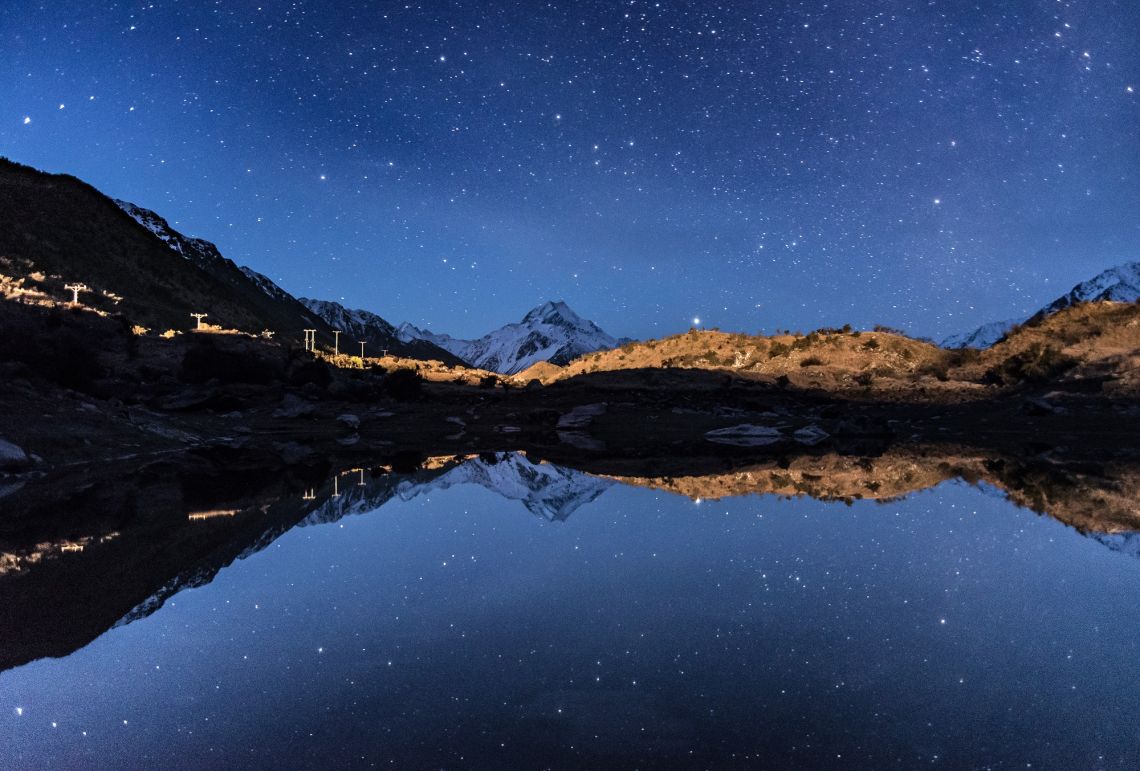
Our latest 'We Are f-stop' installment comes from landscape photographer Deb Clark from New Zealand. A relative newcomer to the photography scene her photography journey started less than three years ago. Her favorite time to shoot is in the near dark of pre-dawn while the stars are still out.
She believes there is something extra special and mysterious about the light at these times. She particularly enjoys the challenge of long exposures. From a few seconds to a few minutes, Deb loves the drama filters can give to an image.
Take a moment to stop and loose yourself in these ethereal shots of the night skies in the South Island New Zealand, along with Deb's words on the experience of shooting in the dark.
All photos copyright Deb Clark / Deb Clark Photography

The southern skies of New Zealand are some of the darkest in the world and the area around Mt Cook is one of my favourite places to shoot astro. There’s something magical about being out in the open surrounded by snowy capped mountains when its pitch black and the depths of winter.
Dressed up like marshmallows, layer upon layer with winter jackets, beanies and gloves we move through the night, headlamps shining brightly and quietly we set up for the shoot. Funny how people whisper in the dark.
Its lights out now… almost everything is by feel.


I’m prepared. I’ve checked out the location before. I know where I want to be, where the milky way will be, when the galactic core will be best and what I’m looking at and what I’m shooting.
I use the f-stop Kashmir. Its packed with military precision and I can find exactly what I’m needing without turning a light on. I’m patient and I will make the most of what is in front of me. Although a clear sky is ideal I’m not bothered if there’s cloud. It adds an interesting aspect to an image.
An hour later and we’re done. There’s two ways it can go from here. Do we stay and wait for sunrise? Absolutely if there are any clouds. But if not, we will be happy with our nights work and a trail of headlights will be seen marching out of Mt Cook.


Thank you, Deb, for sharing your adventures with us!
If these nighttime missions inspire you, give Deb a follow on Instagram here and check out her work at https://www.debclarkphotography.nz/ where you can also find details of her workshops in New Zealand.
"We Are f-stop" is for all f-stop users to share their stories from the field, from small daily adventures to epic travels. Contact us with your story on Facebook or drop us an email to [email protected] and let us know where your photography takes you and your f-stop pack!
SHOP ALL GEAR MORE WE ARE f-stop


©2022 F-stop
Sandro is an Italian photographer. He graduated with a computer engineering degree and worked for several years in the IT field.
After a long struggle, in 2017 he decided to quit the so called “Comfort Zone” and he started working on building his new career as a professional photographer. He loves nature, mountains, landscapes, hiking, and “getting lost” while travelling exploring the world. He is fond of Japan and its culture and he is working on a personal project about this fascinating country. He is always looking for projects that focus on the importance of preserving our Earth and respecting nature and he is deeply convinced that photography is still one of the most effective and important ways to communicate.
Words and images by Sandro Bernardinello

In the last few years I’ve been working on a big personal photography project about Japan and its most remote places. I’ve been solo travelling and exploring this country for several months now and I’ve seen many places. In July 2018 I was wandering in the north and I went to what is now one of my favorite places ever: The Ohachi-Daira Crater in the Daisetsuzan National Park. Located in the center of Hokkaido, it’s the largest national park in Japan and it covers 2,267 square kilometers of stunning mountains and volcanoes. Here nature shows, in all her matchless beauty, some of the roughest and wildest scenery of the country.


Japan is an easy country to explore. It’s extremely well organized and everything works smoothly. It is also true that solo travelling for months as a landscape photographer can be challenging, especially if you are on a budget and you can’t always afford to rent a car. Having to carry all your stuff around, from the busy streets of Tokyo to the wild mountains of Hokkaido, you must be organized. I’ve walked more than 900 km in 2 months, and I needed a great backpack that was at the same time capable and comfortable. I used an f-stop Tilopa with a Medium Slope ICU. I put the pack through all sorts of weather conditions and it never disappointed me.


In more or less an hour, I reached the summit of Mount Kurodake, where the mountain hut is located. From here, after a gentle ascent, I finally reached the first lookout over the crater. It was breathtaking. The caldera has a diameter of 2 km, and its bottom is covered by a puzzle of patterns like splashes of color in a painting. A river runs from one side to the other, drawing a sinuous line that goes all the way across the place. The white clouds and the deep blue sky complete the amazing view. The hike goes all the way around the ridge going up and down several peaks from which I got some astonishing 360-degree views over the surrounding mountains. I still have goose bumps thinking about it now.

The trek is not particularly tough, but I found myself testing my balance more than once when crossing patches of old snow in a few steep stretches along the trail. Right before the last ascent to the hut I knew there was a supposedly small river to be crossed walking on the various rocks in the water. Coming out directly from under a large bank of snow, the stream was actually pretty big. Thus, I just had to roll up my trousers, put all my gear and shoes in the backpack and go for a healthy, revitalizing bare-foot crossing in the freezing water.

After such a great hike, there is nothing better than relaxing and having dinner in what was probably one of the best "dining room with a view” I’ve ever been to. After a refreshing nap I went out to check the sky for some night shots and I was not disappointed. A sea of stars and one of the brightest Milky Way views ever were shining against the dark sky. That was one of those moments that is worth any fatigue, any missed hour of sleep, and any difficulty I had to face before.

As a landscape photographer, I feel sunrise is undoubtedly my favorite moment of the day. After a few hours of sleep, I got up at 3:30 a.m. to check the weather conditions and, again, my heart filled up with a joy that made me forget any tiredness. The stunning view of the rising sun flooding the entire landscape with its golden light was unforgettable.


After two years of travelling around, I’m now back in Italy for a few months. It feels good to be back home for a while and it’s a good way to sum up and to set new goals too. I’ll surely be going back to Japan in autumn or winter to get more shots in those seasons when the colors are simply stunning. I’m also planning some other pretty adventurous trips for 2020, focusing on environment conservation involving Italy and Africa! Follow me on Instagram, Facebook, or check my website www.sandrobernardinello.com. Stay tuned!


"We Are f-stop" is for all f-stop users to share their stories from the field, from small daily adventures to epic travels. Contact us with your story on Facebook or drop us an email to [email protected] and let us know where your photography takes you and your f-stop pack!
SHOP ALL GEAR MORE WE ARE f-stop


©2022 F-stop
Damiano Benedetto is an action, outdoor, and sport photographer, but he doesn’t like labels. He just tries to see how people’s emotions are expressed. He says this is not easy but, when it happens, it is an unforgettable moment for both the person in front of and the person behind the camera. He started taking pictures when he was a child with his uncle. He did not shoot that much because rolls of film were expensive, so he would carefully compose each photo. From those days on, he has continued to admire the world and try to get the best of it in each shot.
Words and images by Damiano Benedetto

#5summits1record, what is it about?
Well known vertical runner and MIGU VK World Circuit, and Dynafit-sponsored, athlete, Simone “Simo” Eydallin, challenged himself to set a new personal record in his home valley, Val di Susa, located in the northwestern Italian Alps. The goal was to run five peaks in under five hours over five consecutive days, from July 29 to August 2, 2019 (total of 7000mt D+ on only 26km). The aim of this project was to crowdfund for Ugi Onlus (Union of Italian Parents against children’s cancer).

My goal was to try to document each moment of Simo’s adventure. Every moment of his life in those days had to be illustrated like a sort of diary, not just the vertical run of the day. The first photo session started in June, about one month before the challenge took place. We had some portraits shot both in a studio and outside. I used one f-stop Tilopa with a Pro ICU - XL and one Loka UL with a Shallow ICU - Medium to carry all my gear, included Elinchrom light heads. These kinds of shots are really useful to brands and athletes to launch the events on social media.


We wanted to chronicle the event in real-time. So, the action shots had to be taken live during each single run, not at a later time, like a posing shot.
Due to logistical problems, it was not easy to walk to the right spot on the mountain side in time to take some shots of the run. Therefore, we had to plan our days very rigorously. We also wanted to document the challenge landscape area, preferably during outstanding moments of the day, as around sunset time.

There were two teams involved:
The support team, for Simo’s first needs, was composed of Simo’s wife, Emily; his father, Renato; Mario (Dynafit supervisor); and Simo’s friends, Nicholas and Davide, who played the role of pacemakers to keep the rhythm on the final or the steepest parts of the trails.
The media crew consisted of Alberto, the “drone boy”, who covered aerial film shoots and me as a photographer.

Though areas of the mountain were difficult to access, Simo had a lot of supporters along the way, including friends, children of his hometown kindergarten, local authorities, and just people who didn’t know about his project but who met him during their excursions.
My assignment lasted all day long on different situations, for example starting from Simo’s breakfast, following him during the run on the mountain and then the Crio Room Recovery at the medical lab.


To cover all the different moments of this project I have mainly used a Loka UL, with a Shallow ICU - Medium and one large f-stop packing cell.
Inside the ICU I carried:
- two bodies: NIKON D4 and D4s
- lenses: 35mm f/1.4, 20mm f/1.8, 14-24mm f/2.8, 70-200mm f/2.8
- flash: Nikon SB 800
Inside the packing cell:
- dressing layers
- sun cream
- food bars
- one wind/rain jacket
- light gloves and one Buff
Inside the main compartment of the backpack I put my Black Diamond Distance Z sticks, water bottle, and backpack rain cover. In the top zippered pocket, I had ID documents, mobile phone, phone power bank, and spare mobile cable.

The challenge ended up with a great final result of 4h58’43”. Here are Simo’s times for each mountain:
Oulx - Seguret 1h21’50” 6km 1800D+
Claviere - Chaberton 57’49” 6,2km 1300D+
Sauze d’Oulx - Faro 37’34” 3,2km 1000dD+
Grange della Valle - Niblè 1h04’23” 4,3km 1500D+
Sestiere - Rognosa 57’09” 5,3km 1200D+
In this project, we documented not only the big challenge of an athlete, mountain lover, and man racing against time, nature, and human resistance, but also some of the most beautiful landscapes of our home valley, the Val di Susa, in northwestern Piedmont.

Support Simone and follow him on his exciting future projects on:
INSTAGRAM: @simoeydallin
FACEBOOK: simo.eydallin
Support Damiano and follow him on his projects on:
INSTAGRAM: @damianobenedettophoto
FACEBOOK: DamianoBenedettoPhoto
TWITTER: @damiBenedetto




"We Are f-stop" is for all f-stop users to share their stories from the field, from small daily adventures to epic travels. Contact us with your story on Facebook or drop us an email to [email protected] and let us know where your photography takes you and your f-stop pack!
SHOP ALL GEAR MORE WE ARE f-stop


©2022 F-stop
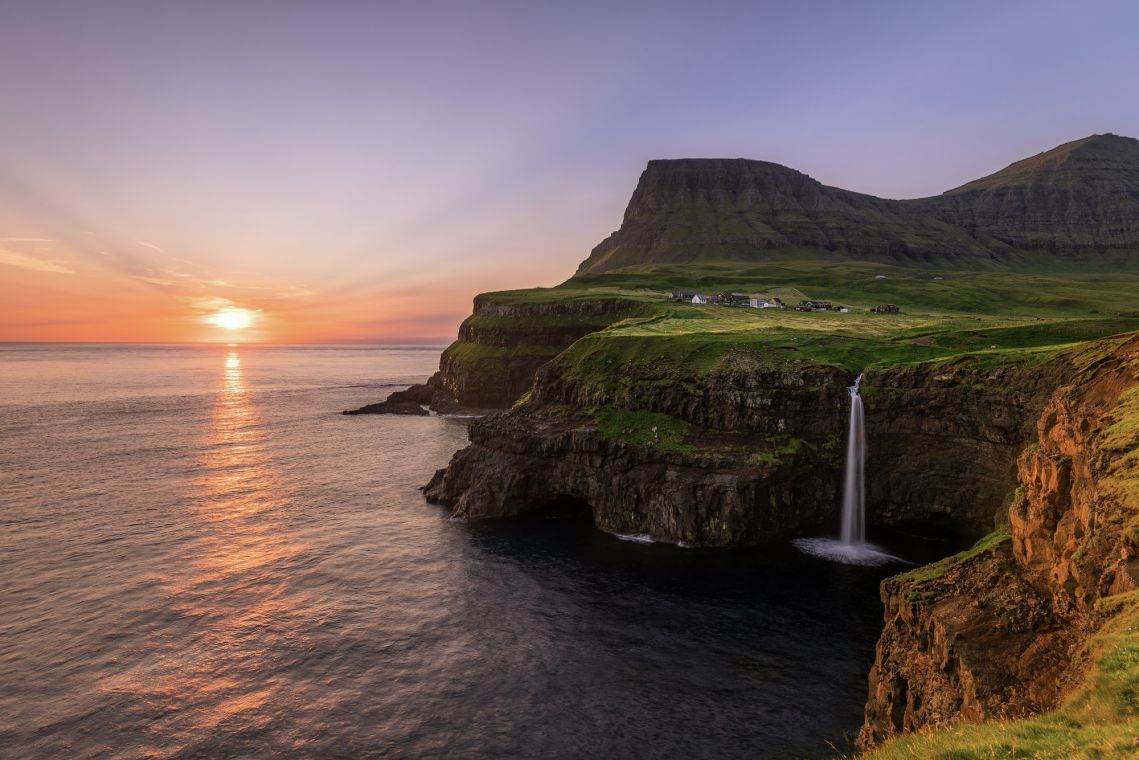
A well crafted timelapse can capture the beauty of a location. f-stop customer, Mattia Bicchi is a professional timelapse and hyperlapse photographer and filmmaker from Italy. He has been living in London for the past seven years, creating timelapse pieces for film productions big and small, for clients inlcuding the BBC, Ford, Virgin Atlantic, and Mulberry. This summer he visited the Faroe Islands with his wife, and he got in touch to share these images and also some advice on what he used to shoot them.
Words and photos by Mattia Bicchi:

I recently decided to leave the UK and travel for a year with my wife, to make timelapse for stock (Getty Images) and to create short films of the places we are visiting. This summer we spend one week in the Faroe Islands, we did not know what to expect. Sure we had seen pictures and videos of the Faroe Islands before, but being there and experiencing the raw beauty of this unique country through our very own eyes was incredible.

In the Faroe islands we stayed in a beautiful Airbnb in the town of Saltangará and went around the island with a car we rented at the airport.
We carried all our gear on a Black Loka and an Orange Lotus, which in my opinion are the most versatile and comfortable photography back bag in the market at the moment, they worked perfectly in this environment. Everyday we drove and hiked in different locations and each of one was just breathtaking.





To make the 8K Timelapse I use a Sony A7rII and few Canon Lenses. I create the cinematic movement with the 3 axis 1.5m Dynamic Perception Stage One and R, which was hanging on a 200m cliff to get an amazing shoot of the iconic Lake Leitisvatn.
Here’s the link to the final 8K TimeLapse of the Faroe Islands on my YouTube
You may find more of Mattia's work on his web site, Facebook and Instagram. nd.
"We Are f-stop" is for all f-stop users to share their stories from the field, from small daily adventures to epic travels. Contact us with your story on Facebook or drop us an email to [email protected] and let us know where your photography takes you and your f-stop pack!
SHOP ALL GEAR MORE WE ARE f-stop


©2022 F-stop
James Mackeddie is a trail runner, mountain biker, and above all, enjoys spending his time in the mountains and wilder places. From time to time he can be found in the thick of a trail race, testing products for brands, and participating in the sport he documents. Inspired to pick up a camera by mountain bike photographers, he can be found shooting trail, ultra, and OCR races for brands and race companies across the UK and Europe.
Words and images by James Mackeddie

I was invited to the Lake District by my running coach, Paul Giblin, to shoot the next installment of the Pyllon XP (experience), a trail and ultra running camp, sharing the experiences of runners, up to, and including, international standard, with a broad base of attendees. Held the 1st to 3rd of March in the picturesque village of Grasmere, on the flanks of several classic Lakeland fells, it’s a runner’s and mountain photographer’s paradise.
In essence, it is three days spent in the mountains, exploring trails, working on mind and body, meeting new people, and eating mountains of food. Having attended the inaugural Pyllon XP in 2018, my running was supercharged for the year ahead and it was a great social gathering after the solitary months of running in the darkness of a grey and wet British winter.

The biggest challenge was running with my camera. Though my load is relatively light, with a Canon 7D and 16-35mm L IS lens, the route I opted to run was 19 miles (30.5km) and 7000ft (2250 meters) of climbing, which proved to be a real test, given it was the first time I’d run in the mountains since racing a two-day, self-supported mountain marathon in October of 2018, some five months before.

Getting myself into position, to avoid a series of repeat shots, not to mention only shooting people from behind, meant running ahead of the main pack when possible. The first miles on the ridge lines, after the sun had risen, burning off the morning hill fog, wasn’t a real challenge; however, as the day progressed, repeated intervals took their toll. In reality, putting the camera away and having the support of those having their photos taken was the solution.
Documenting is very different than a photo shoot, and much like race photography, it’s not about capturing every moment and orchestrating the scene, rather, becoming a part of the group you are accompanying on their adventure and picking your opportunities. This way you are able to create a bond and friendships with those you are with, whilst also getting more natural shots when people have let their guard down.


Inadvertently, I got to test the construction and protective qualities of my bright blue f-stop Kenti pack when I fell off the side of a mountain called Harrison Stickle. I was at the back of the group and when I planted my right foot near the edge, the ground gave way. With my weight loaded onto the right of my body and nothing but space to my side, momentum took me into a cartwheel as I tumbled down the slope, landing on my pack, which partly broke my fall, before my hands and feet instinctively dug into the terrain to halt my acceleration.
Looking up, I noticed one of the runners had clocked my endeavour to find the most efficient way to the valley floor. When I stopped, having regained my bearings, I stood up and stuck a big thumbs up in the air. I was okay. Catching up with the group, the first thing I was asked was, “Is your camera okay?”. To be honest, I hadn’t given it a second’s thought, despite landing on my camera bag. I had heard no crunching sounds of my camera body or lens breaking, nor had I felt it impale my back. On inspection, everything was in perfect condition. It was a testament to the padding and construction of the Kenti. It had softened my impact, protecting me and camera alike.

The biggest tip I can provide for any mountain adventure, whether you’re running, hiking, or riding, is to learn to pack light. Take only what you need. I shot Ultra Trail du Mont Blanc in 2016 for a brand. Being my first major commission, I carried everything I owned, in addition to everything I required for twenty-four hours in the mountains. Bearing in mind this included climbing to a mountain pass at 2,500 meters and then running down it. At the time I thought it was fine and powered through. But afterwards, the effects of the exertion kicked in and I was side-lined for months. Two-thirds of what was in my camera bag was never used.
Learn what is essential, master those tools, and accept that there may be a compromise; but know that you will work around it. Had I carried my 70-200, which weighs 1.5kg, in the Lake District it would have reduced my ability to run with a group. Think of it as three 500ml water bottles in addition to everything else you are carrying and suddenly your perspective shifts. It may feel like a compromise at the time; however, you may be more compromised by carrying it, and may miss more of the action. I now always carry a 16-35mm, and if at a race will carry my 70-200 if I know I’ll be in a position for a while and I don’t have to keep up with anyone.

Visually, I like to keep things natural and raw. I’m not one for Lux, presets, or much manipulation. I want the person looking at the photo to experience the moment as it occurred, whether they were present or not. Endurance athletes experience such a vast array of emotions and sensations when training and racing, and it is these I look to capture. Please don’t smile for the camera, act as if I'm not there. I predominantly shoot in the UK and next up for me is the 50 mile (80km) Ultra Trail Wales in August.
Learn more about James here:
My instagram - https://www.instagram.com/jamesmackeddie/
Coach's instagram - https://www.instagram.com/pyllon/
https://www.youtube.com/channel/UC3tdOfVstOmbG2zJPbMM2Tg
My website - https://jamesmackeddie.com
Link to full story of the XP - https://jamesmackeddie.com/2019/03/10/pyllon-xp-2/
"We Are f-stop" is for all f-stop users to share their stories from the field, from small daily adventures to epic travels. Contact us with your story on Facebook or drop us an email to [email protected] and let us know where your photography takes you and your f-stop pack!
SHOP ALL GEAR MORE WE ARE f-stop


©2022 F-stop
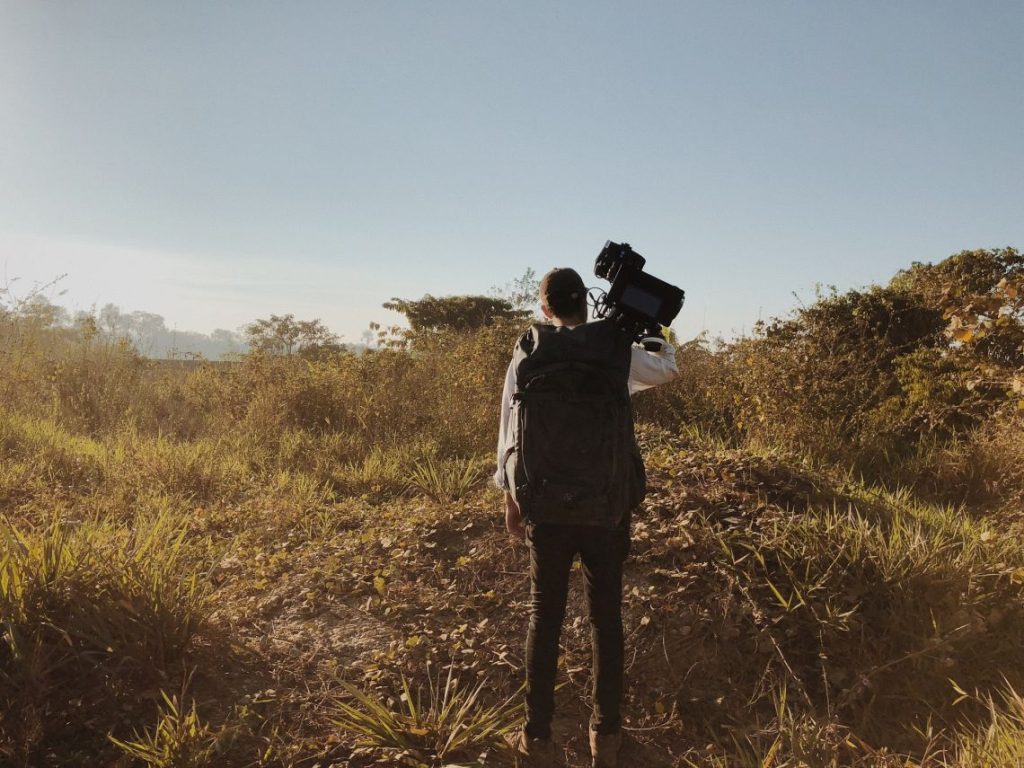
The award-winning Canadian filmmakers Jean Parsons and Jennifer Chiu founded self-directed studies as a film-based artist collective. Parsons and Chiu traveled to Madre de Dios in the Peruvian Amazon with director of photography Farhad Ghaderi to make a documentary that explores what it means to conserve one of the most precious forests in the world—and the various people upon whose shoulders this responsibility now sits.
From the city streets of Puerto Maldonado, into the outskirts of the jungle, then deep into the Tambopata National Reserve the project takes audiences into a series of unique worlds within the forest and beyond. We see the lives of a Peruvian miner and a British scientist whose living laboratory could save the forest from deforestation caused by cattle farming. We meet one of the oldest surviving cattle ranchers in Madre de Dios—an 84-year-old woman who continues to work her land and animals each day. We visit the oldest eco-tourist and scientific research lodge in the Peruvian Amazon to understand how tourism is used as a form of conservation. And, finally, we see daily life with a young indigenous woman raised in the forest who, paradoxically, must live and work in the city in order to preserve her community and her culture.
Interspersed with tableaus of daily life on the roadsides, riverbanks, small streams, and city streets of Madre de Dios, the film serves as a collaged portrait of this unique and mythological place in the world.
Words and images by Jean Parsons and Jennifer Chiu

We are Jean Parsons and Jennifer Chiu—two filmmakers from Vancouver, Canada and founders of the film collective, self-directed studies. We are interested in themes that consider the social and political issues of race, gender, history, and the environment and we work to produce cinematic, humanistic work that draws upon the poetic logic of cinema.
Together, we try to explore the complex social realities of space and place through very intimate stories about individual people. For us, each project begins with a question and each film is a process of discovery that aims to understand the many different perspectives at play within the site-specific societies that we’re exploring as well as their relationship to our larger, global society.
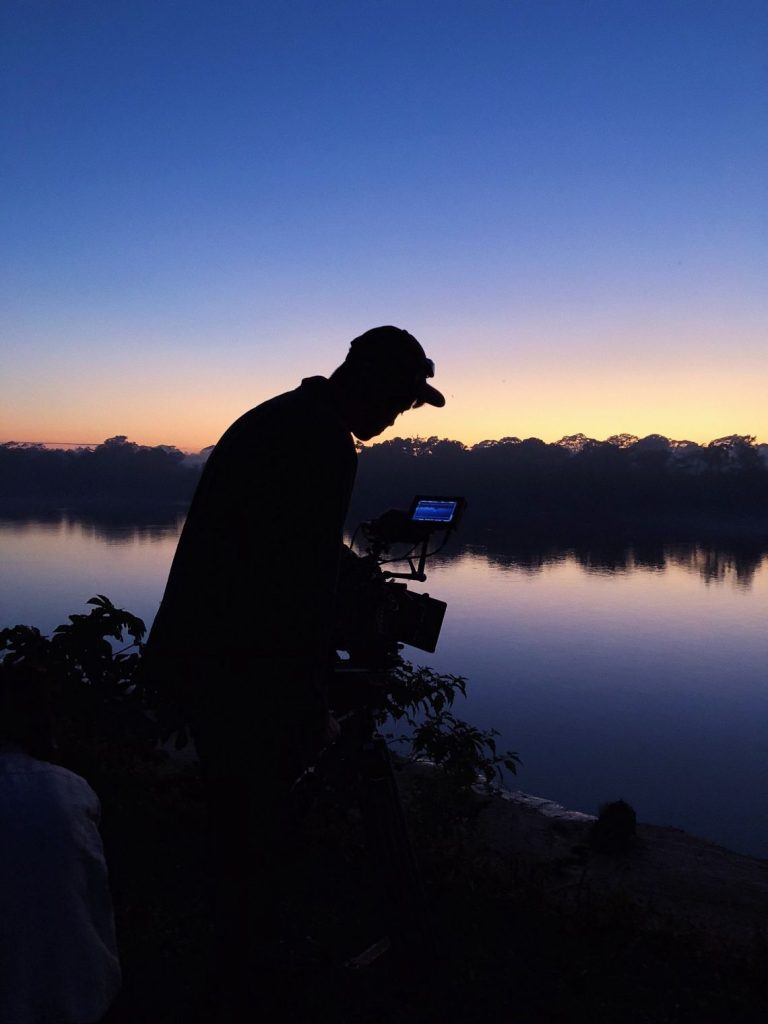
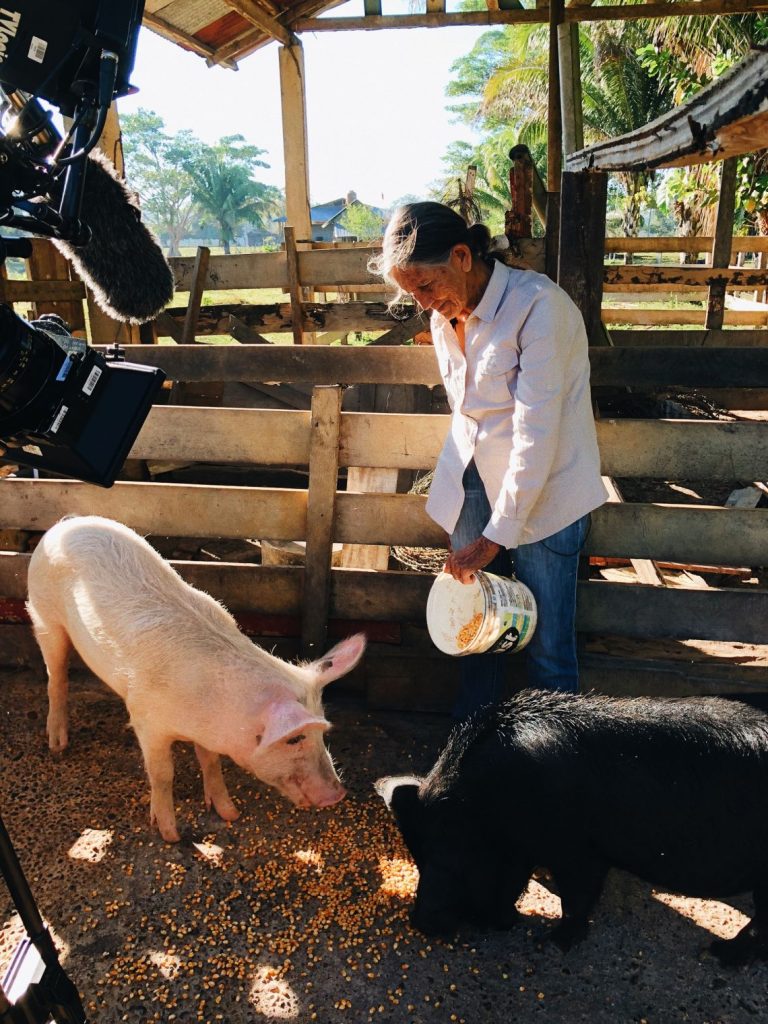
With director of photography Farhad Ghaderi, we traveled to the Madre de Dios region of Peru to shoot a film about conservation in the Amazon and what it means for the various local and global interests that converge in this beautiful, special, and endangered place.
Coming from British Columbia, Canada, which itself has a vast rainforest that’s at risk from climate change and extractive industries, this is an idea that hit close to home for us, despite taking place halfway around the world.
The f-stop SHINN was invaluable for getting our gear in and out of remote locations. We took the backpack on hours-long boat rides down the Tambopata River, into primary rainforest, and across remote farmlands accessible only by dirt roads and our tiny vehicle. We shot using the Arri Amira and a set of Cooke prime lenses. There would have been no way to safely trek through jungle terrain with that kind of camera kit without the SHINN. It absolutely elevated what we were able to visually achieve on this shoot.

We just received funding to make a scripted short called Spring Tide, which we’ll be shooting next summer on one of the Gulf Islands, off the western coast of Canada. The film is a semi-autobiographical exploration of the moment in a young girl’s life when she realizes her sexual objectification in society.
Our work plays in film festivals around the world and some of it is available online. You can learn more at www.selfdirectedstudies.com and www.vimeo.com/selfdirectedstudies.
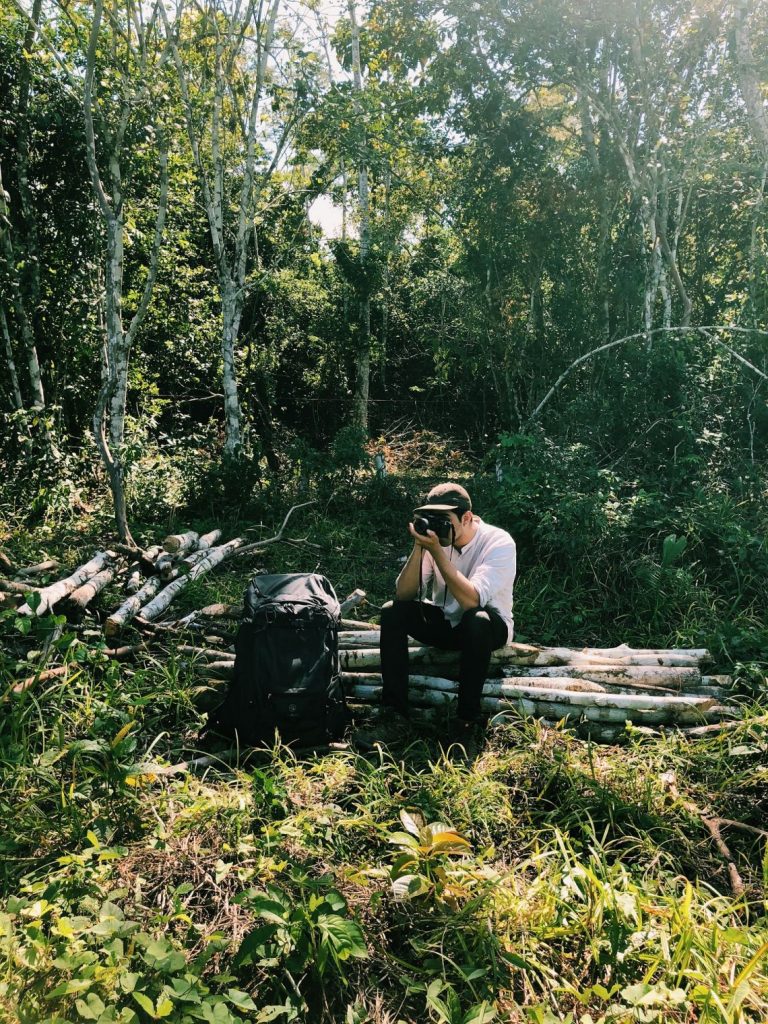
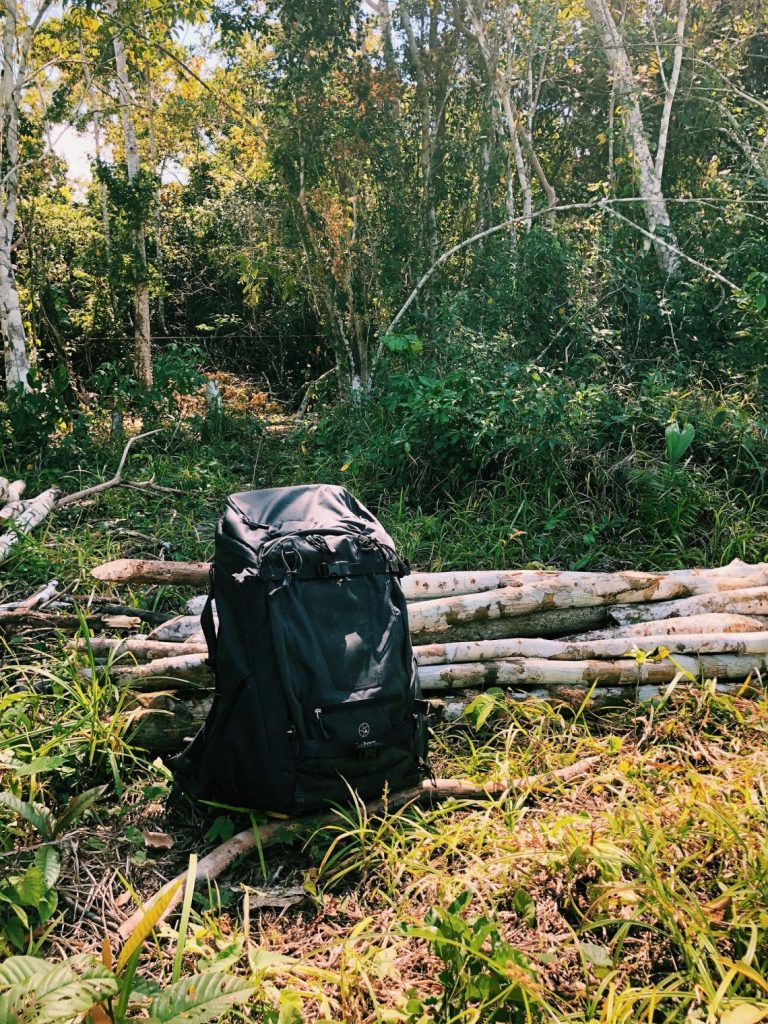
"We Are f-stop" is for all f-stop users to share their stories from the field, from small daily adventures to epic travels. Contact us with your story on Facebook or drop us an email to [email protected] and let us know where your photography takes you and your f-stop pack!
SHOP ALL GEAR MORE WE ARE f-stop


©2022 F-stop


Discount Applied Successfully!
Your savings have been added to the cart.